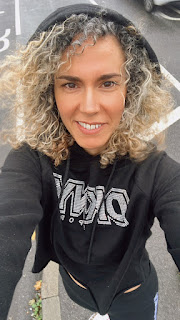What my eyes see
🦻🏼 Our reality
It’s officially Deaf awareness week! This time of the year calls for blooms, less rain, happier atmosphere but since the pandemic all things have changed...I have changed, however, it's also time to celebrate Deaf Awareness Week.
During this week individuals focus on raising awareness on issues, people, and culture about the Deaf community. It’s important to note that both Deaf and hearing allies come together to celebrate the diversity of Deaf culture.
Culture and Language
In Deaf culture, there’s a difference between “the small d” deaf and “the big D” Deaf. People who consider themselves deaf don’t identify with the Deaf community. This is because they only see their hearing loss as a medical condition.
On the other hand, someone who identifies as Deaf feels culturally tied to the community of people who share the same experience. They’re usually proud of their deafness.
Just because someone is clinically deaf, doesn’t mean they’re a part of the Deaf community. However, the way a person identifies is neither right nor wrong. It’s simply a matter of preference.
Deafness is a part of me, it is part of my identity. What we can encourage other people to do is to focus on our abilities. We may have better communication skills, we look at people when we talk to them, which is a nice courteous thing to do, but we do it to help us to understand them. It is about focusing on the strength that you get from having a disability.
My hearing loss was caused by Meningitis and I also have a diagnosis of vestibular disorder with severe positional dizziness. I don’t walk with a cane, but you won’t catch me climbing a ladder or skiing down a slope, or walking in 12-inch heels for that matter. Descending a set of stairs or descending on an escalator presents a challenge that will require razor-sharp focus. How on earth can a person with a balance disorder, keep the balance in a world in constant free fall and remain capable in the workforce? Work colleagues may think that sufferers are faking it. It is only when they see you having an attack, curled up on the floor grasping a bucket, that they believe there is something wrong. Let them know what you need in the event of an attack... The workplace should have a plan in place to give us the support that we need, and so that our colleagues know what to expect.
Deaf awareness training is a must.
https://www.louisedeafawareness.com/deaf-awareness
My friend Louise can help here's her website 🤓
Don't be shy contact her
There are crucial choices that face you even as individuals working up the ladder in the workplace. There is a glass window – that is the best way of describing hearing loss in the workplace. It’s between you, I and our colleagues – the thickness of the window depends on how our hearing or communication goes with the colleagues. Our colleagues don’t know whether they are confident for us to be promoted or be part of the workplace. People lose faith in us because they see the hearing aids and think, “Well, not too sure he/she will be great with people, not too sure he/she can manage people.
This is my life now...my story...and my daily struggles.
I urge all companies out there to put in place reasonable adjustments, find more suitable roles but don't walk away from ohhhhhh they are a liability...they will cost us too much money... I had to look for other revenues that can help me my workplace did not.
Less segregation 🦻🏼we want to be integrated and not having to fear what tomorrow brings.
Main Navigation
Services
Captioning
Transcription
Audio Description
Live Auto Captioning
Translation & Subtitles
Access to work
“AS LONG AS WE HAVE DEAF PEOPLE ON EARTH, WE WILL HAVE SIGNS, AND…WE CAN PRESERVE OUR BEAUTIFUL SIGN LANGUAGE IN ITS ORIGINAL PURITY.” – GEORGE W. VEDITZ, FORMER PRESIDENT OF THE NATIONAL ASSOCIATION OF THE DEAF, 1913
To learn about Deaf culture, it’s important to know about British Sign Language (BSL) since culture and language intertwine. Deaf British use BSL to communicate with other Deaf people or hearing people who understand the language. BSL uses both visual and gestural movements for communication. The language is filled with its nuances, grammar, and complexities – just like any other spoken language.
BSL ( British Sign Language ) is not a universal language. Many countries have their sign language with completely different gestures and visuals!
Many people contribute to and make up the Deaf community. They range from many different industries including entertainment, government, business, and more!
Let's all work together to make our daily struggles less painful especially when it's an invisible disability.
Love to you all 💚
Always happy to answer any questions you may have.
As I always say you are not alone 💚
AK
Stronger Together
LOVE WHAT MAKES YOU DIFFERENT





Comments
Post a Comment